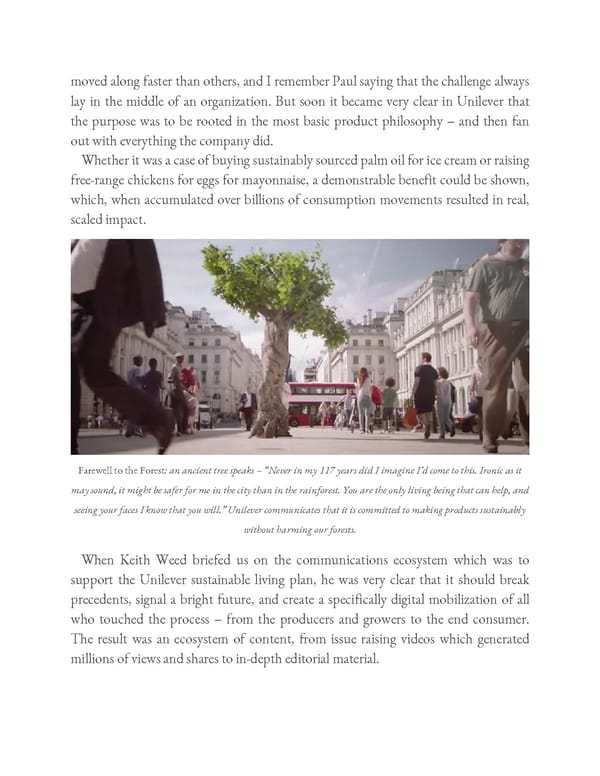moved along faster than others, and I remember Paul saying that the challenge always lay in the middle of an organization. But soon it became very clear in Unilever that the purpose was to be rooted in the most basic product philosophy – and then fan out with everything the company did. Whether it was a case of buying sustainably sourced palm oil for ice cream or raising free-range chickens for eggs for mayonnaise, a demonstrable benefit could be shown, which, when accumulated over billions of consumption movements resulted in real, scaled impact. Farewell to the Forest: an ancient tree speaks – “Never in my 117 years did I imagine I’d come to this. Ironic as it may sound, it might be safer for me in the city than in the rainforest. You are the only living being that can help, and seeing your faces I know that you will.” Unilever communicates that it is committed to making products sustainably without harming our forests. When Keith Weed briefed us on the communications ecosystem which was to support the Unilever sustainable living plan, he was very clear that it should break precedents, signal a bright future, and create a specifically digital mobilization of all who touched the process – from the producers and growers to the end consumer. The result was an ecosystem of content, from issue raising videos which generated millions of views and shares to in-depth editorial material.
 Ogilvy on Advertising in the Digital Age Page 344 Page 346
Ogilvy on Advertising in the Digital Age Page 344 Page 346